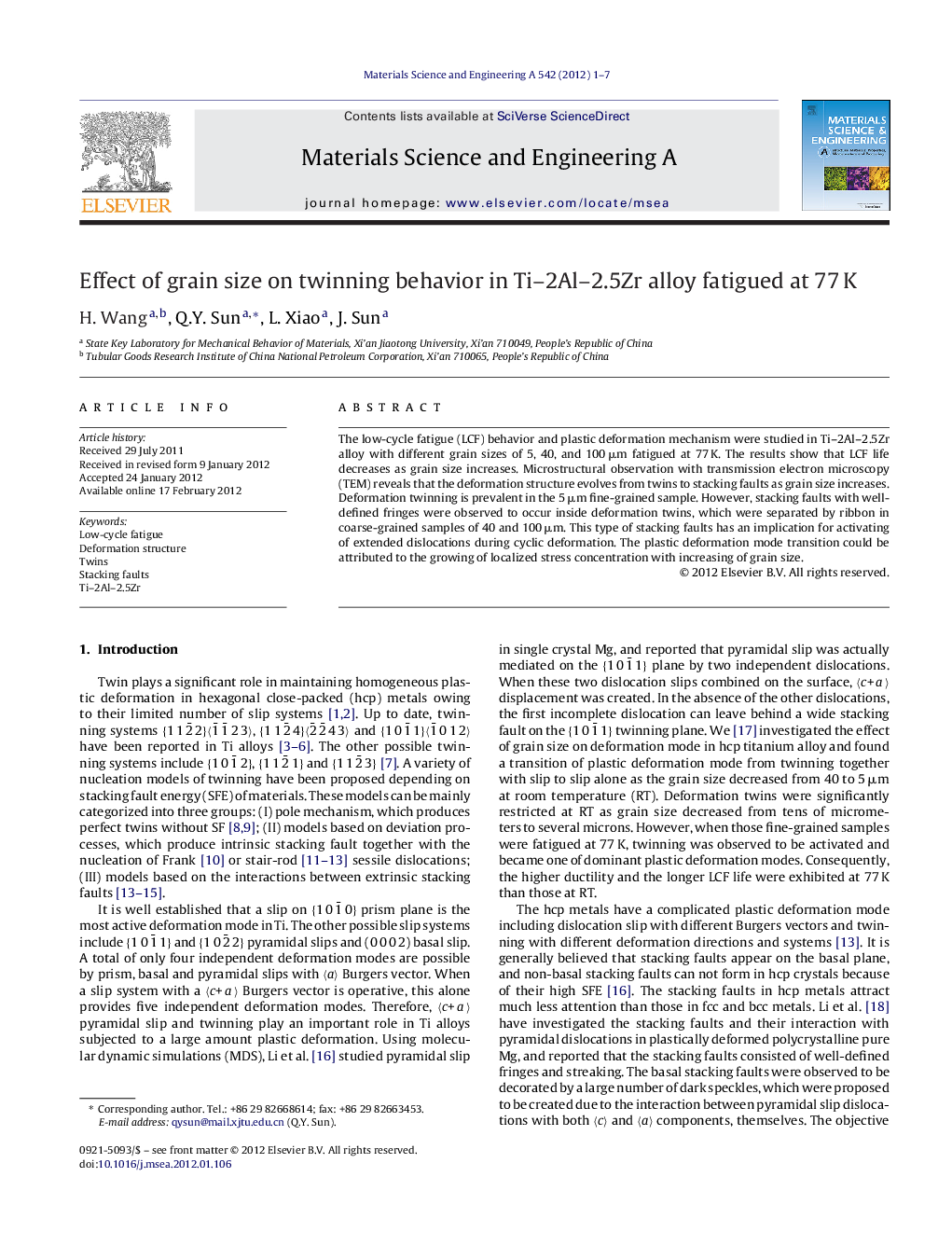| Article ID | Journal | Published Year | Pages | File Type |
|---|---|---|---|---|
| 1577312 | Materials Science and Engineering: A | 2012 | 7 Pages |
The low-cycle fatigue (LCF) behavior and plastic deformation mechanism were studied in Ti–2Al–2.5Zr alloy with different grain sizes of 5, 40, and 100 μm fatigued at 77 K. The results show that LCF life decreases as grain size increases. Microstructural observation with transmission electron microscopy (TEM) reveals that the deformation structure evolves from twins to stacking faults as grain size increases. Deformation twinning is prevalent in the 5 μm fine-grained sample. However, stacking faults with well-defined fringes were observed to occur inside deformation twins, which were separated by ribbon in coarse-grained samples of 40 and 100 μm. This type of stacking faults has an implication for activating of extended dislocations during cyclic deformation. The plastic deformation mode transition could be attributed to the growing of localized stress concentration with increasing of grain size.
► Twinning behavior dependence on grain size in Ti–2Al–2.5Zr alloy fatigued at 77 K. ► Deformation structure evolves from twins to SFs as grain size increases from 5 μm to 40 and 100 μm. ► These results show that extended dislocation is activated in Ti alloy during cyclic deformation.
